
The quasi-biennial oscillation (QBO) consists of alternating easterly (east-to-west) and westerly (west-to-east) directions of the wind in the tropical stratosphere with an average period of 28 months.

Satellite observations of Aura OMI formaldehyde and Nitrogen Dioxide to identify areas that would benefit more from reducing Nitrogen Oxide emissions versus reducing Volatile Organic Compound emissions.

This study shows the effect that shale oil and natural gas operations has had on tropospheric Nitrogen Dioxide levels in the Central Plains, and indicates the potential consequences for regional air quality.
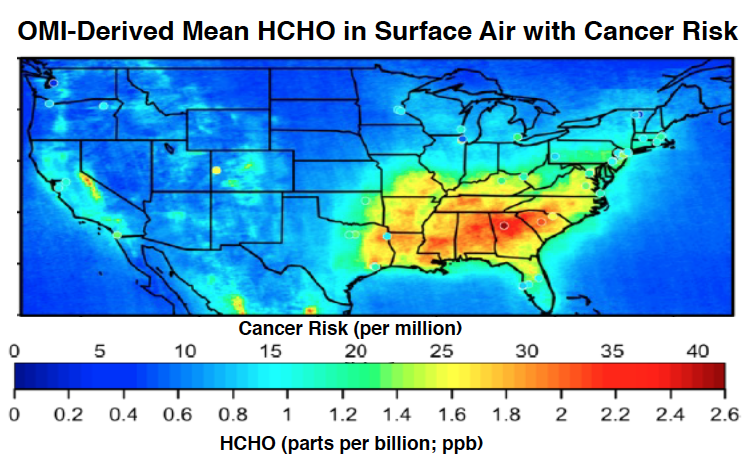
Formaldehyde is the top hazardous air pollutant of concern to EPA. It has a large natural atmospheric source from the oxidation of isoprene, a volatile organic compound emitted from trees, especially in the Southeast US.
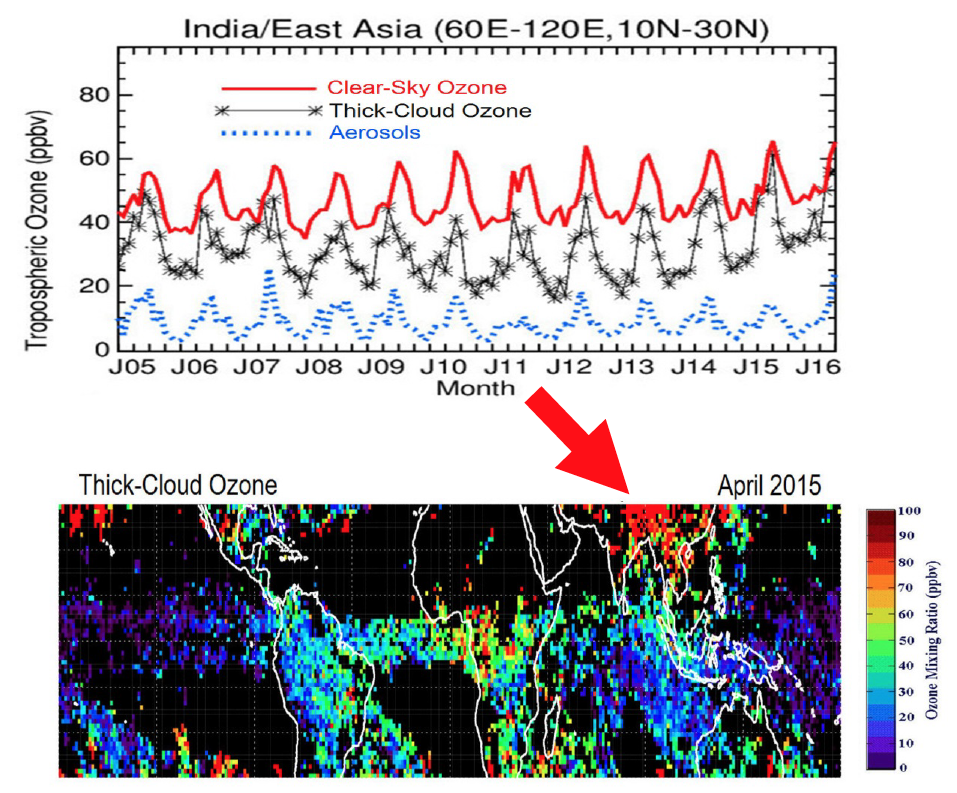
Ozone within deep convective clouds is controlled by several factors involving photochemical reactions and transport. Gas-phase photochemical reactions and heterogeneous surface chemical reactions involving ice, water particles, and aerosols inside the clouds all contribute to the distribution and net production and loss of ozone.
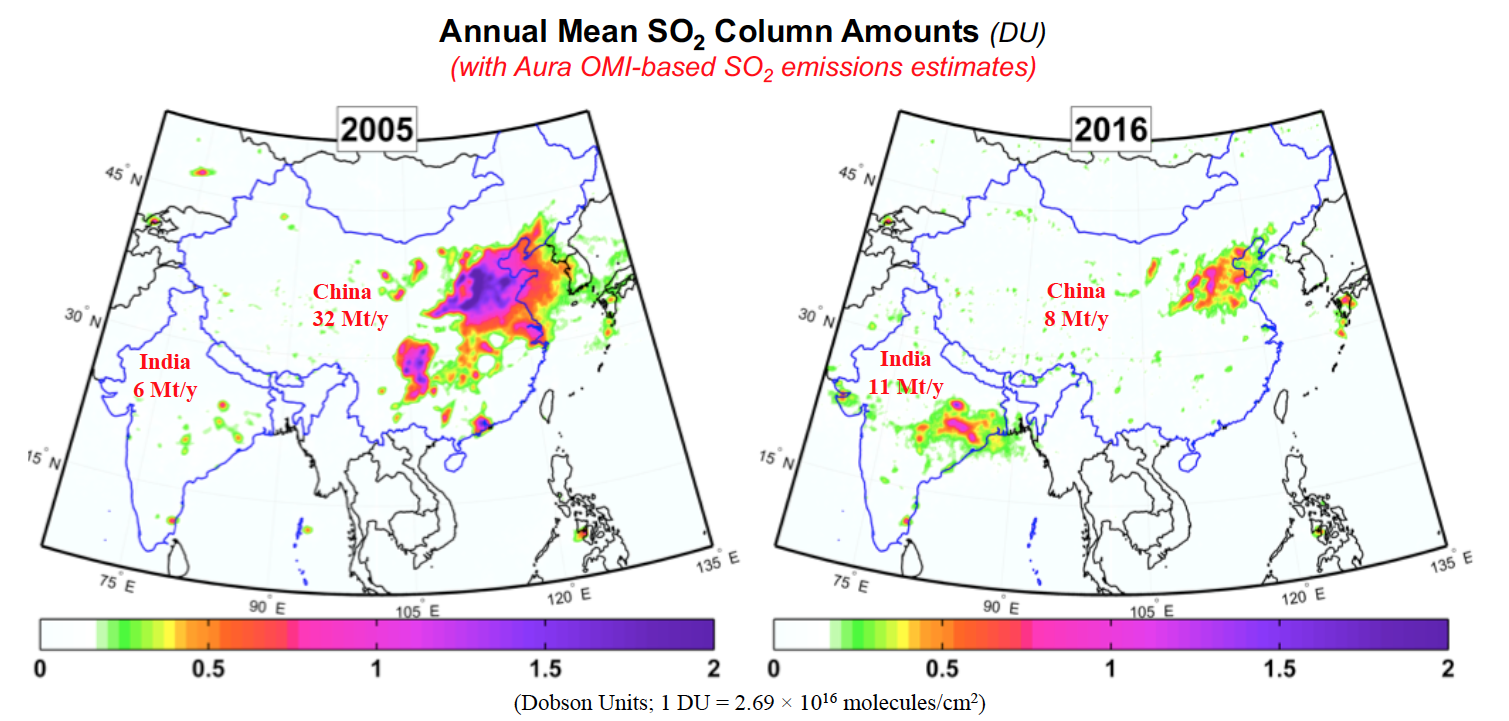
Sulfate commonly makes up >10% of the fine particles in China and India, often much more during heavy pollution episodes. To predict and mitigate air pollution, air quality models require accurate information on the emissions of SO2 and other pollutants.
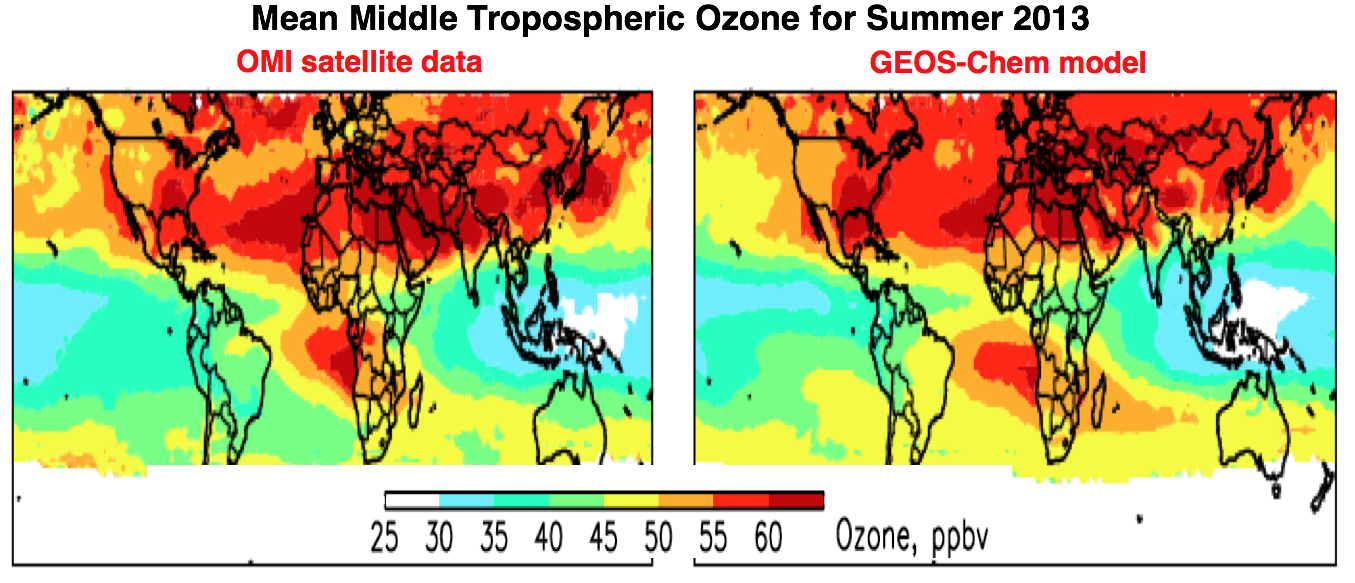
Tropospheric ozone is an important climate gas and an air pollutant. It plays a major role in tropospheric chemistry, such as serving as the main source for the hydroxyl radical, the atmosphere's primary oxidant.
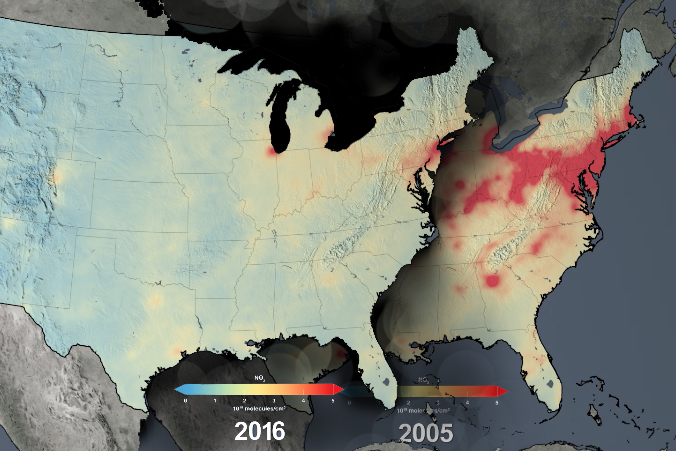
The Ozone Monitoring Instrument (OMI) animation of observations of decreasing nitrogen dioxide
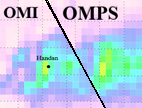
From the Ozone Monitoring Instrument to the Ozone Mapping Profiler Suite : As Aura has entered the stage of extended mission and OMI has lost part of its spatial coverage due to instrument issues, it is critical to continue the global anthropogenic sulfur dioxide record with new instruments.
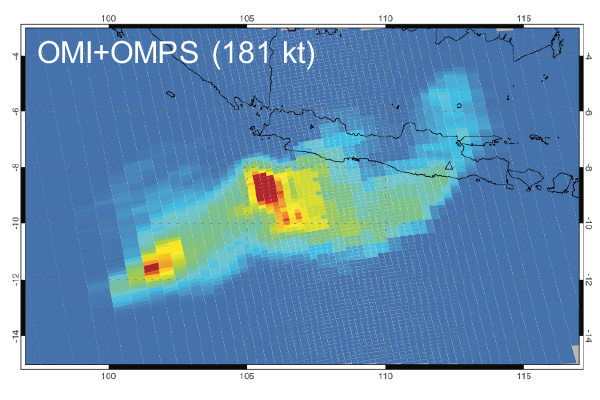
As compared with the previous OMI data product, this new version significantly reduces retrieval bias for large volcanic eruptions and improves data quality for small degassing volcanoes.
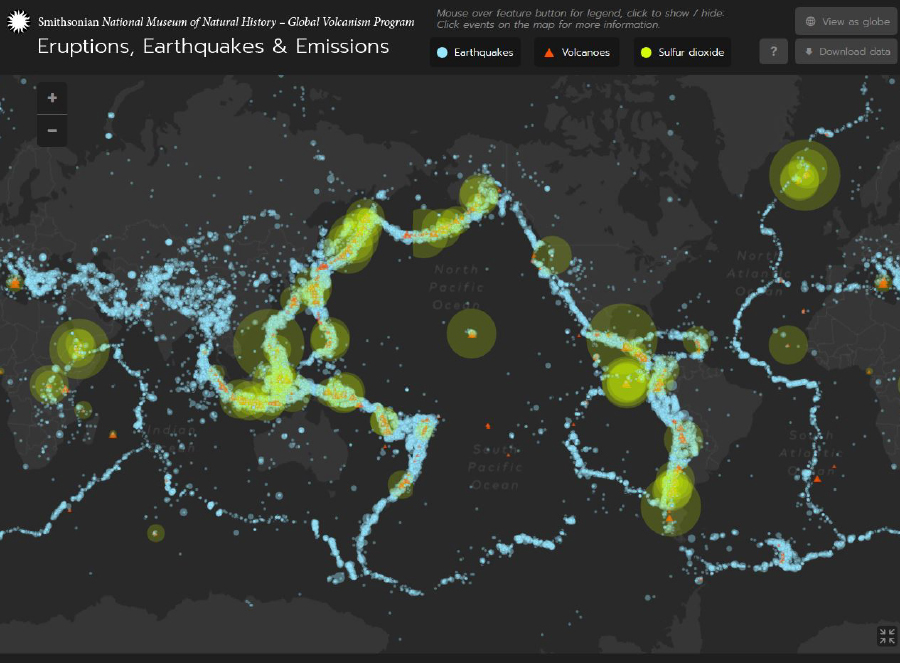
The Global Volcanism Program at the Smithsonian Institution National Museum of Natural History has created a new Eruptions, Earthquakes and Emissions web visualization using NASA volcanic sulfur dioxide data from multiple satellites.
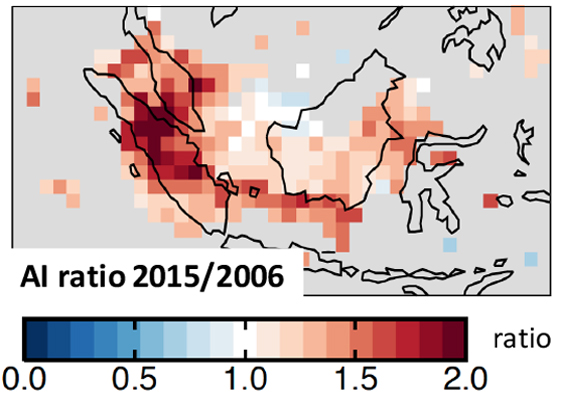
GEOS-Chem adjoint study estimates ~100,000 premature deaths in Equatorial Asia due to severe, persistent smoke from the El Niño fires.
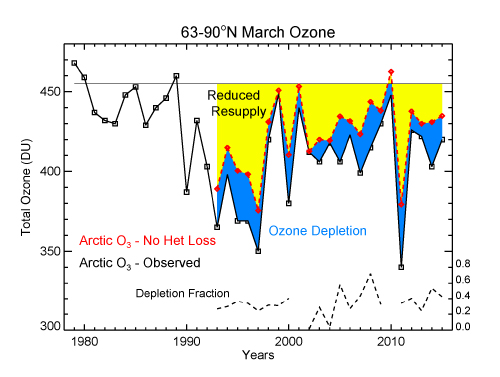
The Arctic seasonal evolution of simulated O3 and the long lived trace gas N2O from the Global Modeling Initiative Chemistry and Transport Model (GMI CTM) both closely agree with MLS observations for all years since Aura's launch in 2004.
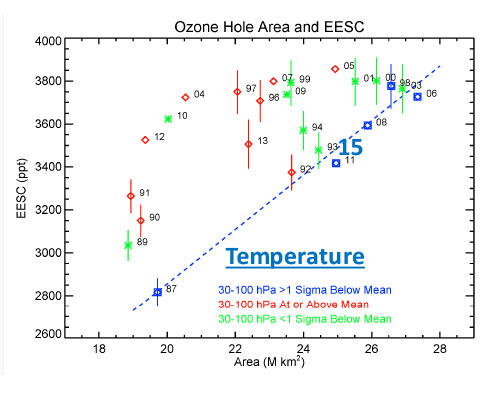
The next three decades will see an end of the era of big ozone holes. In a new study, scientists from NASA Goddard Space Flight Center say that the ozone hole will be consistently smaller than 8 million square miles by the year 2040.
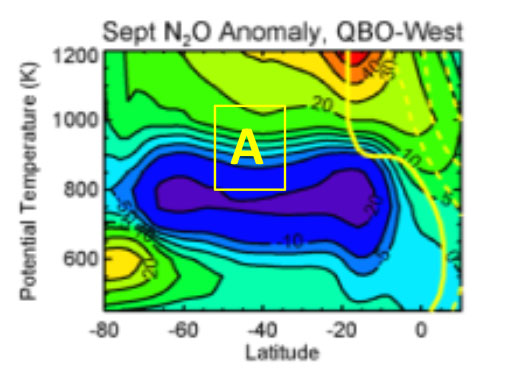
A decade of MLS Nitrous oxide reveals a remarkable transport pipeline from the midlatitude middle stratosphere to the Antarctic lower stratosphere, allowing tropical winds to modulate how much chlorine reaches the Antarctic ozone hole each year.